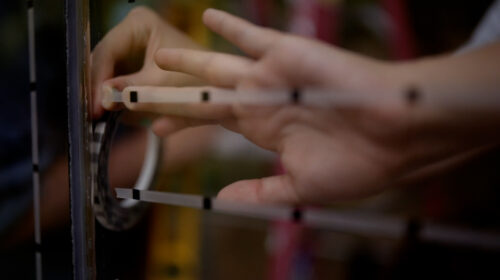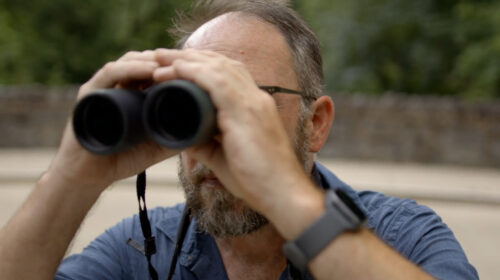Every year, billions of birds migrate across North America for spring and fall migration, navigating treacherous obstacles along the way. One of the most deadly obstacles they face is a material used in almost every modern building – glass. More than a billion birds die after colliding with windows and other glass every year in the United States alone. But it doesn’t have to be this way. Anyone can take action to help end bird collisions!
Read on to learn the simple actions you can take to help prevent bird-window collisions and make your home — and community — bird-friendly.
Make your windows bird-friendly
No one likes the “thunk” of a bird hitting their window. Birds run into windows because they don’t see glass — just the trees and sky the glass reflects back at them. But there are plenty of easy ways to help birds understand that glass is a physical barrier. Insect screens placed on the outside of windows can be one simple way to prevent bird-window collisions, because they break up the window’s reflection. If screens aren’t an option, you can place markings directly on your window using tape or decals, or get creative with temporary paint. Just make sure that there are no gaps bigger than two inches — a single large decal won’t cut it.
American Bird Conservancy has compiled a handy list of options to fit any circumstance — find out which bird-safe window solution is right for you and sign the bird-safe pledge!
Illustration of a hummingbird

Turn out lights at night — especially during migration season
When birds migrate at night, they can become confused by the artificial lights of our cities. Lights lure them to land in dangerous urban landscapes — when they wake up the next morning, they are in an unfamiliar maze full of deadly glass. One of the easiest ways to avoid this is to simply turn off lights at night. An increasing number of cities go “Lights Out” during peak migration. But even if you don’t live in a Lights Out community, you can check tools like BirdCast to see when peak migration will hit your area, and turn out your lights to help birds pass safely.
Illustration of a hummingbird

Go birding!
Birding is a growing hobby in the United States, and it’s a great way to get to know your local birds and their habits. Apps like Merlin Bird ID make it easy to get started by simplifying the bird identification process. Ever wonder which birds you can hear out your window in the morning? Merlin can help identify and log birds by sound, or by characteristics like size and color. The app will also tell you which birds are most abundant in your area at different times of year. Once you get the hang of it, consider joining a local birding group — or starting your own!
Illustration of a hummingbird

Help researchers track birds — through community science!
To most effectively help birds, it’s important to understand their movements. You can help researchers do this through platforms like Cornell Lab of Ornithology’s eBird. With eBird, you can log every bird you see by location and upload it to a global database collating hundreds of thousands of observations around the world. Conservationists use eBird to improve bird habitat management and implement more effective species protections.
In addition to using eBird, another fun way to help scientists collect data is to become a bird banding volunteer. Especially during migration season, researchers catch and band birds so that they can track their movements over time. Bird banding has uncovered astonishing things about how far birds travel and how long they live. Get involved by finding a bird banding station near you!
Illustration of a hummingbird





